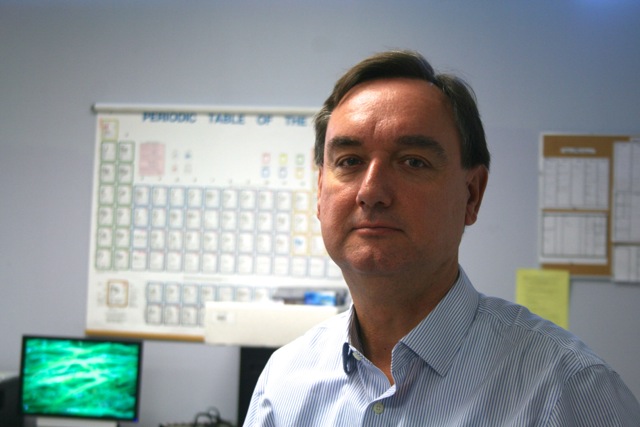Outage Notification
On Thursday, October 30, 2025 at 5am ET we will be updating the NJCTL Moodle site. The site will be unavailable for approximately 4 hours.

When Yuriy Zavorotniy, program director at the Center for Teaching and Learning, emigrated from the Ukraine to the United States in 2000, it was because he and his wife wanted their son to benefit from the higher education system here.
Both Zavorotniy and his wife were established teachers in the math and science fields, and both had everything to lose professionally by pulling up their roots to go stateside. But it didn’t matter, because there was an ideal of higher education here that was unavailable in their native country, he said.
“What was the driving force? My son,” said Zavorotniy. “We wanted him to go to college here. We gave up everything we had and we started from nothing.”
His son went on to earn degrees from Boston University and Columbia and now works in the financial sector in London, somewhere in the middle between Bergen County Technical High School in Teterboro, NJ, where Zavorotniy has taught physics since 2001, and the family’s native home.
“I was a physics teacher for 18 years before coming here,” he said. “I wouldn’t exchange what we’ve done since for anything.”
In addition to ensuring his sons’ advancement in higher education (he has a younger son currently studying physics at the University of Maryland) Zavorotniy has been an on-the-ground leader in the development and implementation of the Progressive Science Initiative® (PSI®) at Bergen Tech, the launch pad of the groundbreaking pedagogical approach developed by New Jersey Center for Teaching and Learning® (CTL®).
“When I came to Bergen Tech, there was something of a struggle because we didn’t have a unified science course,” Zavorotniy said. “We were teaching different courses like physical science, chemistry, honors physics, conceptual physics, biology. It wasn’t very consistent.”
“But then we started to push physics first, then chemistry and then biology, and we found this to be a very successful approach,” he said.
Then, one year, Zavorotniy began teaching honors physics to freshmen instead of conceptual physics. Finding that approach successful, Bergen Tech gave up on conceptual physics at the end of that year and whittled down their roster to physics, honors physics and AP.
In 2007, Zavorotniy’s Bergen Tech colleague and future CTL Executive Director Dr. Robert Goodman won Teacher of the Year and was awarded with a SMART Board. “I fell in love with it,” Goodman said. “You can move at a much faster rate, it accelerates the learning process and you can save time on the routine process.”
But more, SMART Board has a tool that can be built in to a teacher’s lesson that provides, simple, conceptual multiple-choice questions. “We started building lessons based around the SMART technology.
And so PSI was born, offering other education leaders models for transforming math and science in their own schools, districts or states.
Improving the curriculum and teaching strategies by incorporating SMART products, Zavorotniy said, improves students' achievement in science and mathematics and said he expects CTL to expand to all K–12 subject areas.
The success in New Jersey, Zavorotniy said, is providing leverage for CTL as it expands its model globally. “This is a very friendly approach, students work in groups and kids don’t feel pressured. Once they don’t feel that pressure they can be in the right mindframe to succeed. That’s the philosophy of PSI.”
Reversing the sequence of biology-chemistry-physics that PSI endorses is also critical to a student’s success, Zavorotniy said. “Teaching physics first is more logical. Physics provides the foundation—you don’t have to memorize biology or chemistry facts from a textbook. When you learn physics first, you understand why those facts occur.”
“If I had this method when I started teaching, I would have been so happy. I’m just happy that we’re able to do this now,” Zavorotniy said.
Tags: News